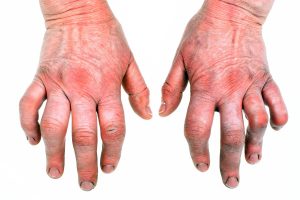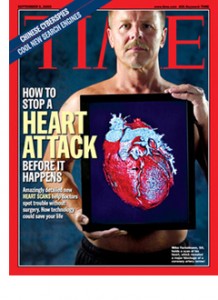The British Medical Journal has published a research articles in Sept. 2016 showing that arthritis drugs can cause heart failure. This occurs particularly in elderly patients around the age of 77 years and older. This is an age where arthritis is often causing pain, and people regulate the pain with over-the-counter pills. These anti-arthritis drugs belong into the group of anti-inflammatory drugs, called NSAIDs. This stands for “non-steroidal anti-inflammatory drugs”. The study was entitled “Non-steroidal anti-inflammatory drugs and risk of heart failure in four European countries…”
Arthritis drugs can cause heart failure shows study
The researchers followed adult patients above the age of 18 who started 27 different types of NSAIDs between 2000 and 2010. There were 92,163 hospital admissions for heart failure; the controls consisted of 8,246,403 patients not taking NSAIDs. 4 countries shared in this study providing 2.2 million patients from the Netherlands, 7.5 million from Italy, 13.7 million from Germany and 11.1 million from the United Kingdom.
Results of study
NSAID use of up to 2 weeks prior to assessment had a risk of 19% of resulting in a hospital admission for heart failure. A control group of patients who had not taken NSAIDs for at least 6 months or more had no hospital admission risk.
Seven traditional NSAIDs led to hospital admissions for heart failure. They were: diclofenac (brand name Voltaren), ibuprofen (brand name Motrin), indomethacin (brand name Indocin), ketorolac (brand name Toradol), naproxen (brand name Naprosyn or Aleve), nimesulide (brand name Mesulid and many others), and piroxicam (brand name Feldene). In addition two COX 2 inhibitors, etoricoxib (brand name Arcoxia) and rofecoxib (brand name VIOXX) were also having the same side effects.
Different risks of causing heart failure for different NSAID’s
The risk for heart failure was not the same for every NSAID. The risks ranged from 1.16-fold to 1.83-fold. Specifically ketorolac had a risk of 1.83-fold, indomethacin 1.51-fold, piroxicam 1.27-fold, diclofenac 1.19-fold, ibuprofen 1.18-fold, and naproxen 1.16-fold. Translated into common language it means that ketorolac had a risk of 83% of causing a hospital admission due to heart failure. In the case of ibuprofen it was only an 18% risk.
Some NMSAID’s doubled risk for heart failure
The risk for heart failure doubled for diclofenac, etoricoxib, indomethacin, piroxicam, and rofecoxib when used at very high doses. Doubling the risk means a 200% risk. Typically, when an arthritis patient has a flare-up of pain, the patient increases the NSAIDs dose. The patients usually take the higher dose for a longer time. Some NSAIDs had a significant risk for heart failure even at a medium dose. This was the case for indomethacin and etoricoxib. The good news was that celecoxib (brand names Celebrex and Celebra) at usual doses did not lead to an increased risk of heart failure.
Dose-response curves for toxicity of NSAID’s (exception: celecoxib, brand names Celebrex and Celebra)
Dose-response curves were obtained where possible. Here the researchers looked at the effect of low, medium, high and very high doses of NSAIDs in patients. Again heart failure occurrence was studied among those patients. The result clearly showed that low and medium doses of NSAIDs were fairly safe, but high and very high doses of NSAIDs caused heart failure. Etoricoxib, Piroxicam and Rofecoxib were particularly toxic in higher doses. Indomethacin was toxic at medium and high doses. An important exception to the rule was celecoxib (brand names Celebrex and Celebra), which did not cause heart failure, either at low doses or high doses. This is one of the most used NSAIDs, so it is fortunate that it does not cause heart failure.
Discussion of study
The authors of this study discussed why they believe heart failure is developing in patients who take NSAIDs. They argued that NSAIDs inhibit prostaglandin synthesis and the enzymes COX1 and COX2. This is how inflammation and pain gets inhibited, which is a good thing. But at the same time blood supply to the kidneys is reduced, kidney function is impaired, and sodium is retained. This is a bad thing as it leads to fluid retention and fluid overload of the heart resulting in heart failure. As the prostaglandin inhibition is dose-dependent, the authors said this is the reason that the heart failure rate is also dose-dependent when measured in large populations, as was done in this study. A noted exception, as already mentioned, is the popular celecoxib, which does not cause heart failure, even at high and very high doses.
Conclusion
This publication has a lot of statistical power as it was based on research in 4 European countries. It also involved almost 10 million subjects. The researchers compared them to an equally large control population. Because of the size of the study population it was possible to calculate risk ratios for NSAIDs causing heart failure for 27 different types of NSAIDs. Furthermore, the authors succeeded in quite a few cases to calculate risk factors for different concentrations of NSAIDs used. This statistical method is called a dose-response curve. It is a powerful pointer to toxicity when high doses cause heart failure, but low doses don’t.
The physician can use the information from this publication to select one of the NSAIDs that is least harmful. This would be a drug like celecoxib (brand names Celebrex and Celebra). The physician would tell the patient to use the least amount possible to minimize side-effects. Many aging arthritis sufferers will benefit from this. Hopefully the FDA will review this material and shut down the use of some of the more dangerous NSAIDs or force the manufacturer to attach a black box warning about the drugs that belong into this category. You should review what your favorite NSAID is and discuss this with your physician. Perhaps print a copy of this review and take it with you to your health provider. He may not have heard yet about the study.









